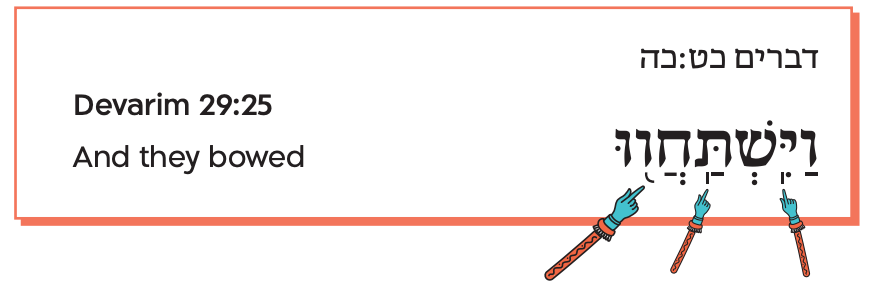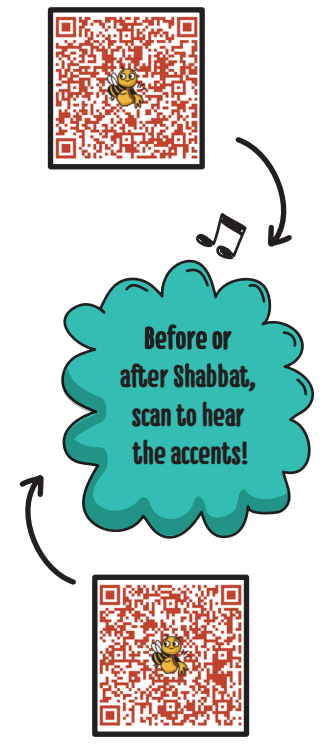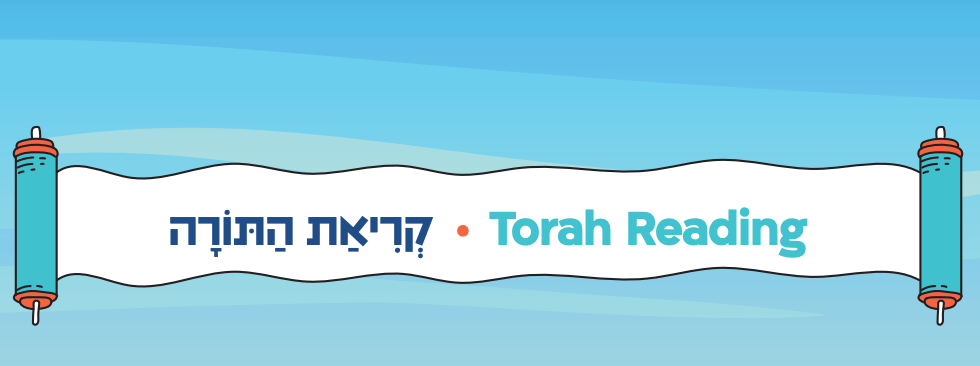Ilustration Credit: Elad Lifshitz, Dov Abramson Studio

Secondary Accents!
We have learned so many notes this year! And we also learned how notes usually show us where the accents are in a word. In Hebrew, the main accent of the word is always on one of the last two syllables of the word. But sometimes that isn’t enough! There are some words that have more than one accent.
Think about the English word: “conversation.” If you had to pick one accent, you would say it was “con-ver-SA-tion.” But, if you think about it, you pronounce the first sound a little stronger than the second sound. So really, it would be “con-ver-SA-tion.”
The same thing happens with Hebrew words, and sometimes we actually get two notes on a word to show us how to pronounce it:

וְשֹׁ֣טְרֵיכֶ֔ם
And your officials
See how there is a zakeif katon over the last syllable, but also a munah on the first syllable? That shows that this word really has two accented places, even if the main one is at the end.
But sometimes there is a secondary accent and no musical note to go with it. That’s when we need the handy-dandy mark known as a מֶתֶג (meteg)! Check it out in action here:

וַיִּֽשְׁתַּחֲו֖וּ
And they bowed
The main accent here is at the end, it’s marked by the tip’ha that is under the vav. But, if you look closely, you will see two other lines under this word, one under the yud and one under the tav. Each one of those is a meteg! They are meant to tell you that you should pronounce the word like this: va-yish-ta-ha-VU (and not va-yish-ta-ha-VU).
Maybe you or someone you know has a name with lots of syllables? Try shifting the main and secondary accents around and see what it sounds like. If you don’t like having your name mispronounced, maybe you should start writing it with a meteg!

-------------------
-------------------





